#spiritualist
Text

#photos#pagan#spiritual healing#healing#spirituality#nature#paganism#earth#self care#universe#pantheist#ego#spiritual community#spiritualist#spiritual practitioner#holistic practitioner#anxiety#comics#comic#spiritual#humor#not mine#save
39 notes
·
View notes
Text
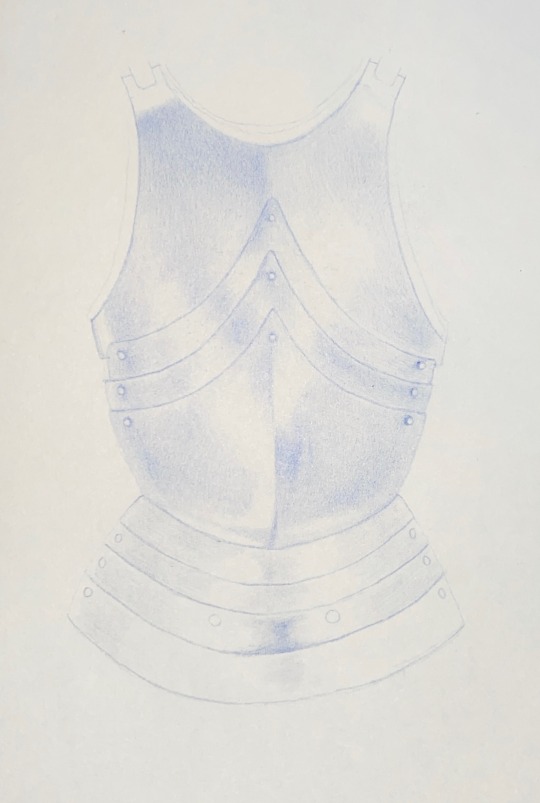
armor
#art#artist#illustration#drawing#draw#illust#armour#religious art#spiritualist art#spiritualist#spiritualism
47 notes
·
View notes
Text


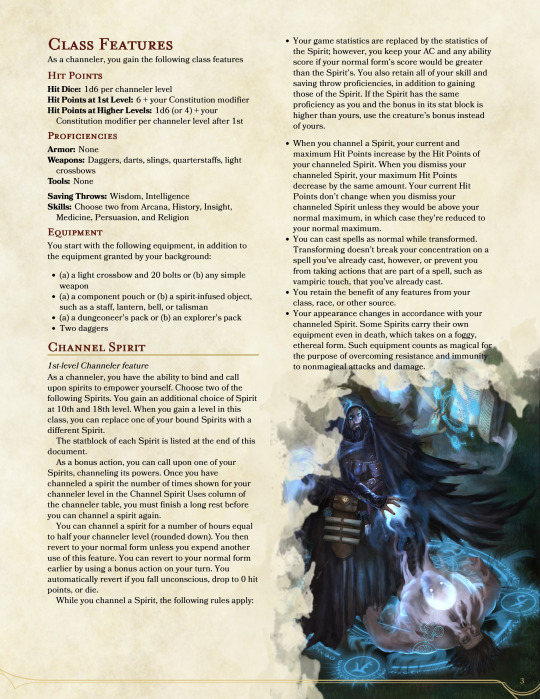


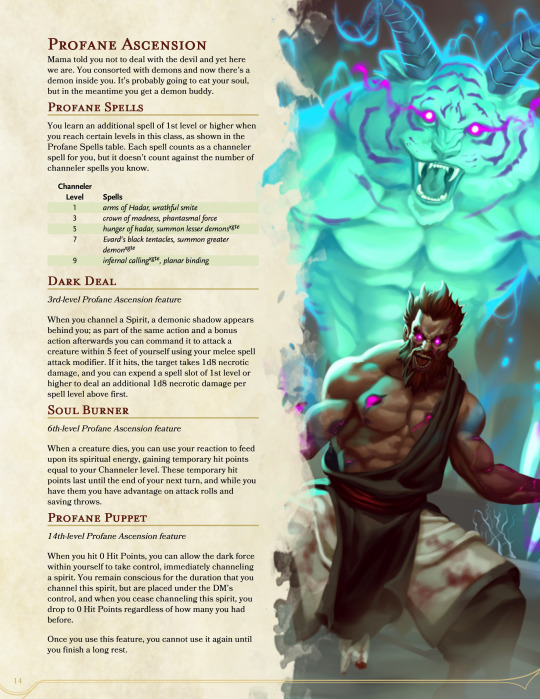



The Channeler - Homebrew Class by Nines, v0.1
The Channeler brings about supernatural effects not by knowledge of the Weave or by divine intervention, but by directly summoning and binding long-dead souls to their will.
Most mages avoid dabbling in matters of the soul, as the risks involved in such matters is far greater than that of other magics. But for the most learned and the most desperate, such pathways can bring about powers far beyond mortal ken.
Click for quality, links in reblogs, all the usual stuff.
Mechanically, kinda like if a Bard had Wildshape instead of Inspiration and skill monkey abilities. The ability to choose which spirits to bind allows you to fulfill basically any party role, but the limited number of spirits "known" puts a hard cap on your versatility. You'll never be better at swinging a sword than the Fighter, or blowing things up than a Wizard, or sneaking around than the Rogue, but you should almost always be able to contribute.
On the other hand, your spellcasting abilities are heavily support and utility-oriented. You get to take a lot of the jankier Wizard-only soul magics as well, but for the most part your main combat abilities will be channeling your choice of Spirit.
I'd have liked to take a bit longer to better ensure balance, but... OGL drama.
The spirits themselves aren't attached. Could probably have fit the entire document into one post, since the image limit is now 30, but the post was already getting long. Basically, mini-statblocks that get added to your own. You still have the same HP bar, with just a little extra HP. Don't expect to get 2 extra bears worth of HP at level 2.
#my homebrew#homebrew class#class#channeler#soul binder#spiritualist#d&d 5e#d&d#dnd#homebrew 5e#d&d homebrew#dnd 5e homebrew#dnd homebrew#5e homebrew#homebrew#dungeons and dragons homebrew#dungeons and dragons 5e#dungeons and dragons#dnd 5e#5e dnd#5e d&d#5e#homebrewery
361 notes
·
View notes
Text
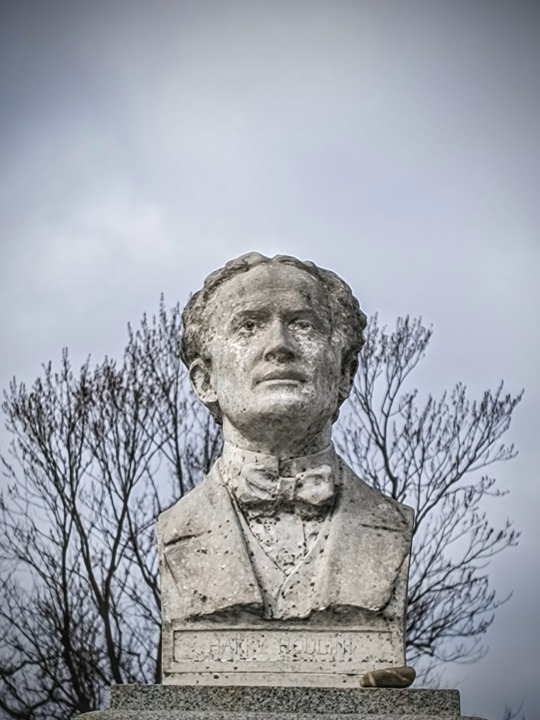
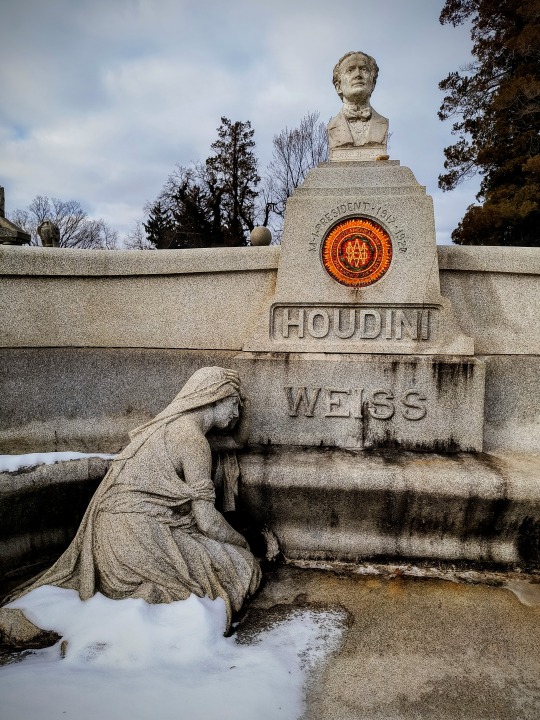
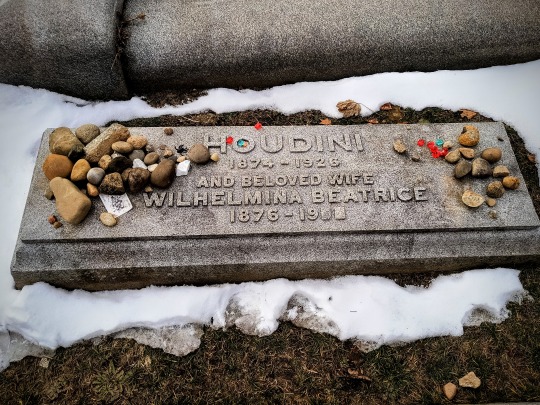
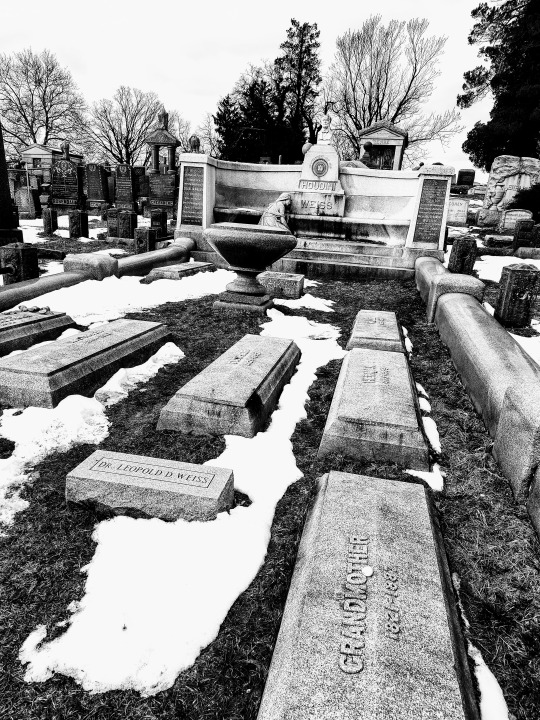
This is the final resting place of Harry Houdini, master magician and escape artist (1874-1926). In 1926 after a show in Montreal he was reclining backstage in his dressing room. A local student asked him about his ability to withstand punches to his gut. Houdini had a method of clenching the muscles in his stomach area to help him survive even the hardest gut punch. But immediately after Harry had answered his question, the student, J Gordon Whitehead, suddenly started punching Harry violently; 4 or 5 times directly to his stomach. Harry was still in a reclined position and wasn't prepared. He was overcome and moaned with agonizing pain. But stubbornly, he refused to see a doctor and shrugged it off, insisting that he would still do his next show even though he was now feeling very sick with bad stomach cramps and abdominal pain. He made it to the show, struggled through his act and immediately collapsed after the curtains came down. That show would be his last. When he finally made it to the doctor, they discovered that Harry's appendix had ruptured. And it had poisoned his insides. Harry clung to life for a few more days before passing away on Halloween night, 1926. After his death his grieving widow Wilhelmina held seances every Halloween for 10 years to try and communicate with him. But sadly, she never heard a thing so she stopped trying. To this day lingering doubts remain about Houdini's death. The Spiritualists hated him and wanted him dead because Harry was exposing their hypocrisy and grifting to the US Congress. Some have speculated that the student, J Gordon Whitehead, may have been working with the Spiritualists and thus he was actually an assassin.
To honor Harry's memory, it is a tradition to hold a seance every Halloween night and try to reach out to him. Who knows, maybe he will answer back someday. And let us know what really happened on that fateful day.
Machpelah Cemetery
Queens NY 2/21/24
#harry houdini#magician#escape artist#appendicitis#queens nyc#american history#spiritualist#seance#halloween
26 notes
·
View notes
Text
Idk I feel like instead of telling new witches / practitioners / spiritualities / [insert preferred word] what to do and what to stay away from we should be teaching them defining their personal values, discernment, critical thinking, encouraging them to always look at both/many perspectives before settling on what that truly resonates with them, and allowing them to take their time forming their personal beliefs - just a thought…
#not everything is black and white#witchblr#personal#witchcraft#witchy#magick#witchy vibes#spirituality#beginner wtich#beginner witchcraft#witchcraft community#baby witch tips#beginner witch tips#baby witch#spiritualist#spiritual community#spiritual growth#spiritual journey
50 notes
·
View notes
Text



Spiritualist flag! [1]

@radiomogai @plural-terms-collection @io-archival
#spiritualist#member role#role#liom#plural gang#pluralgang#plurality#plural terms#liom coining#system coining#system terms#liom term
22 notes
·
View notes
Text


Crazy Sexy Cool
#artist#art#gauges#girls with tattoos#tattoos#content creator#stlouis#stlsaintlouis#creative#diva#spiritualist#onlyf@nz
16 notes
·
View notes
Text
WE AS A SOCIETY NEED TO BRING BACK COVENS
PLEASE
#witch#witchblr#witchcraft#spiritualist#wicca#look ok#individual practice has been huge#mostly because of a huge availability of information#and how back in the day to be a witch you kinda had to be in a coven#but like#imagine?#having a close group of friends and people#you practice with?#doing rituals#with homies??#similar beliefs?#goals honestly#god i wish it was me
35 notes
·
View notes
Text
When people tend to not understand spirituality or think the terms used are sinful/demonic they say something like “You can’t serve two Gods.” I immediately get confused. Because who said that’s what I was doing ?
I don’t worship the universe nor my ancestors .. the universe is my portal to God , my ancestors are guides & the guardian angels that help me ; I honor my ancestors. Also I’m not one of those spiritualist that think I am God. Yes,I’m made in God’s image .. I have God like qualities.. God is within me but There’s ONE God. The creator. The one who gives grace. The one who knows me better than myself. The alpha & the omega. God is love. God is peace. God is grace. God is everlasting. God is healing. God is powerful. God is the protector of ALL. God is abundant.✨💐🤲🏾
#godisgood#god is my refuge#hoodoorules#hoodooism#hoodoo#ancestors#ancestry#guardian angel#spiritual knowledge#spiritualgrowth#spirtiuality#spiritual alignment#spiritualjourney#spiritual disciplines#spiritual awakening#spiritualism#spiritualist#god#god is love#lord jesus christ#jesusisgod
14 notes
·
View notes
Text


Victoria Helen McCrae Duncan was born on November 25th 1897 in Callander.
Known as Helen Duncan, in 1944, she became last person in the UK to be tried, convicted and imprisoned under the 1735 Witchcraft Act.
Hellish Nell, as she became known, was actually a medium, and by all accounts not a very good one, the way she earned her living was to hold seances and charge plenty for her services, but she was rumbled several times as a fraud.
Nor was she the last person convicted under the 1753 Act – now repealed and replaced with the Fraudulent Mediums Act of 1951 – because in fact three other people were on trial alongside her and one of them was sent to prison, too. Yet somehow the “last witch” nickname has stuck, though records clearly show that some months after her trial and imprisonment in September 1944, one Jane York, 72, from Forest Gate, East London, was charged under the same act with seven counts of pretending to conjure up spirits of the dead. Incredibly, York was simply bound over for the sum of £5 to be of good behaviour for three years.
Ah, but that happened after D-Day, and there is no question when you examine the evidence that the authorities wanted to make an example of Helen Duncan and put her away for the summer of 1944.
From an early age her own family saw her as fey, and her mother was mortified when the child’s behaviour became impossible – she would predict doom and destruction for all sorts of people and was given to outbursts of hysteria.
Her early life was otherwise normal. She moved to Dundee and worked at the Royal Infirmary where she met Henry Edward Duncan, a wounded war veteran and a cabinet maker. They were married in 1916, and Duncan would eventually have six children by Henry who saw a great way of making money from his wife’s talents in clairvoyance – she read tea leaves and made predictions and earned a few shillings for doing so.
By 1926 she had become a fully-fledged medium giving seances during a time when spiritualism was all the rage. Moving to Edinburgh, her seances were soon the talk of the town – even the ghost of that local man turned Sherlock Holmes creator, Sir Arthur Conan Doyle, a great believer in spiritualism, was said to have materialised at sittings.
A prominent feature of her seances was her apparent ability to produce “ectoplasm” from her mouth during her trances when she was transformed into her spirit partners Albert or Peggy, a young girl whose voices “spoke” through Duncan. She had grown quite obese and the contrast between this 20-stone woman and the childish voices was part of the reason why people believed in her.
It was at a seance in January 1933 that Peggy emerged in the seance room and a sitter named Esson Maule grabbed her. The lights were turned on and the spirit was revealed to be made of a cloth undervest which used as evidence that led to Duncan’s conviction on the Scottish offence of fraud at Edinburgh Sheriff Court in May 1933.
The conviction does not seem to have harmed her career. Duncan was by then making a good living by conducting seances throughout Britain at which “the spirits of the dead were alleged to have appeared, sometimes talking to and even touching their relatives”.
Duncan began to get more famous but also began to be more scrutinized. Director Harry Price of the National Laboratory of Psychical Research examined her. He deemed her ‘ectoplasms’ to be made of cheese and eggs which she would regurgitate up. Price was less than impressed by what he felt was a show woman, exploiting people for money.
“Could anything be more infantile than a group of grown-up men wasting time, money, and energy on the antics of a fat female crook.”
During World War Two, Duncan lived in Portsmouth, the home of the Royal Navy. In 1941, the spirit of a sailor reportedly appeared at one of her seancés announcing that he had just gone down on a vessel called the Barham. HMS 'Barham' was not officially declared lost until several months later, its sinking having been kept secret to mislead the enemy and protect morale.
Unsurprisingly, Duncan's activities attracted the attention of the authorities and on 19 January 1944, one of her séances was interrupted by a police raid during which she and three members of her audience were arrested.
Duncan was remanded in custody by Portsmouth magistrates. She was originally charged under section 4 of the Vagrancy Act (1824), under which most charges relating to fortune-telling, astrology and spiritualism were prosecuted by magistrates in the 20th century. This was considered a relatively petty charge and usually resulted in a fine if proved. She was eventually tried by jury at the Old Bailey for contravening section 4 of the Witchcraft Act of 1735, which carried the heavier potential penalty of a prison sentence.
In particular, the medium and her three sitters were accused of pretending 'to exercise or use human conjuration that through the agency of Helen Duncan spirits of deceased persons should appear to be present'. Duncan was also charged with offences under the Larceny Act for taking money 'by falsely pretending that she was in a position to bring about the appearances of the spirits of deceased persons'.
The trial caused a media sensation and was extensively covered in the newspapers, many of which revelled in printing cartoons of witches on broomsticks. At one stage, the defence announced that Duncan was prepared to demonstrate her abilities in the witness box. This amounted to conducting a séance in the court while in a state of trance and the offer was refused.
Duncan was found guilty as charged under the Witchcraft Act and sentenced to nine months in Holloway Prison, London, but she was cleared of the other offences. She was the last person in Britain to be jailed under the act, which was repealed in 1951 and replaced with the Fraudulent Mediums Act following a campaign by spiritualist and member of parliament Thomas Brooks.
There are two common misconceptions about Duncan's conviction. The first is that she was the last person in Britain to be convicted of being a witch. In fact, the Witchcraft Act was originally formulated to eradicate the belief in witches and its introduction meant that from 1735 onwards an individual could no longer be tried as a witch in England or Scotland. However, they could be fined or imprisoned for purporting to have the powers of a witch.
The second misconception is that she was the last person to be convicted under the Witchcraft Act. Again this is incorrect. Records show that the last person to be convicted under the Witchcraft Act was Jane Rebecca Yorke in late 1944. Due to her age (she was in her seventies) she received a comparatively lenient sentence and was fined.
Additionally, it has often been suggested that the reason for Duncan's imprisonment was the authorities' fear that details of the imminent D-Day landings might be revealed, and given the revelation about the Barham it is clear to see why the medium might be considered a potential risk. Nonetheless, then prime minister Winston Churchill wrote to the home secretary branding the charge 'obsolete tomfoolery'.
Helen Duncan was released from prison on the 22 September 1944 and seems to have avoided further trouble until November 1956, when the police raided a private séance in Nottingham on suspicion of fraudulent activity. No charges were brought and shortly afterwards, on 6 December in the same year, the woman who is sometimes remembered as the 'last witch' died.
A campaign by her descendents to clear her name continues to this day.
The first pic is a bust f Helrn, which was presnted to the town of Callander, but such is the atitudes towards her it was rejected, it i nowon display at the Stirling Smith Art Gallery and Museum.
14 notes
·
View notes
Text

किस दुनिया में मगन हो ?
नरक भरे तिस उदर हैं, रूधिर भरी सब देह। गरीबदास केशव कहै, या मनुष्यौं मुख खेह।। बिष्टा जिनकी देह में, मगन फिरौं दिन रात। गरीबदास केशव कहै, जिन शिर जमकी घात।।
सब मानव के शरीरों में नरक भरा है। नसों में रूधिर भरा है, थूक भरा है। बिस्टा (टट्टी) भरा है। ये दिन-रात इसी नरक भरे शरीर में मस्त रहते हैं। फिर कुत्ते-गधे बनते हैं। यमदूत इनके ऊपर (घात) मारने के लिए छुपकर दांव लगाए रहता है।
बंदीछोड़ सतगुरु रामपाल जी महाराज जी
#सतगुरु#सत्संग से ही सुख है#सत भक्ति संदेश#सतलोकआश्रम#संत रामपाल जी महाराज#supreme god kabir#god kabir#supreme god#kabir is real god#godkabir#god#bhagwad gita#saintrampaljiqoutes#saintrampalgmaharaj#saint rampal ji maharaj#saintrampalji#realgod is kabir#allah is kabir#kabirisgod#kabir is supreme god#spiritual knowledge#spiritualgrowth#spiritual awakening#spiritual#spirituality#supremegodkabir#spiritualist#krishna#delhi#qoutes
7 notes
·
View notes
Text

Ain’t nothing wrong with that!
#pagan#paganism#spiritual healing#spirituality#nature#divine feminine#healing#worship#plants#altars#earth#moon#self care#self love#not mine#pagan community#pagan witch#black witches#spiritual practitioner#spiritualist#self esteem
324 notes
·
View notes
Text

66 66 66 66 66 66 66 66
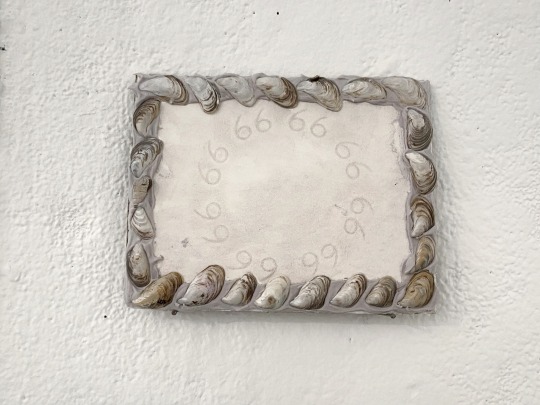
#art#artist#illustration#draw#drawing#illust#sad drawing#forest#fawn#bunny#hilma af klint#spiritualism#spiritualguidance#spiritualist#spiritualist art#spiral#seashell#nature#nature art
134 notes
·
View notes
Text
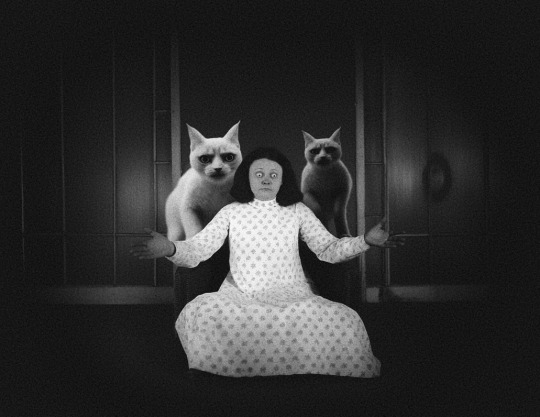
Spiritualist manifesting cat spirits
16 notes
·
View notes
Text

𓋹
35 notes
·
View notes
Text
Grim Apostle (Spiritualist Archetype)
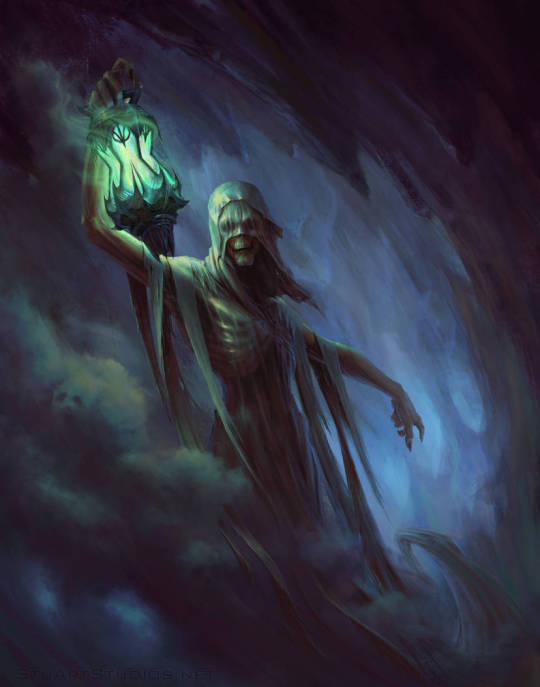
(art by StuHarrington on DeviantArt)
Ah, the spiritualist class, those shepherds of the dead, but very specifically not undead excepting in one case, because of reasons.
The spiritualist is very similar to the summoner, which is why the two were merged in 2E, but there are some stories that can only be told with the combination of ghostly being and the one they are bound to.
Truly, both the spiritualist and their phantom can come from all walks of life, leading to some odd couples and some interesting concepts… but one walk of life really doesn’t normally lend itself to cultivating such a bond: the nihilistic worshippers of daemons.
After all, daemons are distinguished from other fiends by their desire to devour souls, to snuff out those candles from the cosmos and leave it that much darker. A free-floating soul attached to a binder is surely too tempting a target for them.
Luckily, The Midwives of Death adventure, the final part of the Tyrant’s Grasp AP and the final First Edition product created, had a few final character options in it to round things off, including this option for such dark casters.
Rather than draw upon a wayward soul, these spiritualist bond themselves with a spiritual echo similar to those tapped into by mediums, but manifested in ectoplasmic form like a spiritualist. However, it is the nature of these vestiges that give one pause: for they are echoes of the Four Horsemen, the demigod rulers of daemonkind!
This hungry shadow that the mystic bonds with is not forced to reflect only one Horseman, but can shift each day to reflect a new one, giving them variable power sets depending on the day, again hearkening back to the similarities to mediums.
Needless to say, these mystics are every bit as monstrous as their dark patrons, and I can just imagine them feeding souls to their grim phantom as a sacrifice to their daemonic masters, believing, perhaps rightfully that those souls end up on the plates of the Horsemen themselves. They best take care though, for these phantoms prove just as cruel and hungry as the daemons they resemble, taking a bit of their “master” with them when banished.
Regardless, the result is a ghostly master/servant duo with a nasty set of powers and a sinister relationship.
As a reflection of the Four Horsemen, the phantoms of a grim apostle draw upon foci based on those entities, which they can change each day. However, their hunger and malevolence claws even at their own masters, and when the spirit is sent hurtling away from the material world by violence, they dig metaphysical claws into their master, risking taking them with them.
Which isn’t to say that they are entirely a liability. The spiritualist’s soul belongs to them, after all, and they will brook no other claimants, warding their host against death magic and magic that would displace or ensnare their soul, at least while cohabitating their body.
The four foci that these mystics and their phantoms have available are as follows. Firstly, there is Death, when they draw upon Charon. Such phantoms appear as shapeless, cowl-laden figures. They seem to embody death in general rather than Charon’s inevitability, but they gain some fancy abilities regardless. The apostle, for one, marks foes for death with their attacks, making the phantom’s attacks more potent against them. The phantom also develops an aura which impedes mundane and magical healing as well. Furthermore, they also instinctively learn techniques to quickly follow foes that try to escape their grasp. Finally, they learn a killing word to slay foes.
Second up is Famine, the purview of Trelmarixian, which gives the phantom a jackal-like visage. Their attacks are particularly dexterous, and take the form of ravenous bites. Their aura weakens foes with the pangs of starvation, they can unleash a horrific magical howl of anguish that weakens nearby foes, and they can even briefly swallow foes whole.
Apollyon’s domain is Pestilence, and the phantoms gain a ram skull cranium in this form. Their strikes weaken foes as if suffering illness, they surround themselves with phantasmal biting flies that devour foes, they can deliver disease with a touch, and finally, their strikes can make a foe suddenly very contagious, spreading their suffering to others.
Finally, we have War, the position held by Szuriel, and these phantoms resemble his form as an eyeless angel with black wings. These phantoms are strong, rather than agile, and their strikes aim for the most painful and damage-causing areas of the body. Their aura whips allies and foes alike into a frenzy of aggression, and their strikes heal themselves. Finally, Their fury becomes so great that any effect that would slow down or cause them to hesitate in their assault no longer have any effect.
With four powerful combat-focused foci to choose from, this archetype can be pretty good for tailoring your power set to the day, but you can also narrow your focus to one or two if you so choose. It really depends upon you. Just keep in mind the drawback that you can be dealt heavy damage with no way to resist it if your phantom goes down. With that in mind, perhaps building with some survivability in mind would be good.
Now, aside from villain campaigns, this archetype sits squarely in the “mostly for NPCs” category, but the fact they can vary up the powers and fighting strategy of their phantom per encounter means that this archetype works best for a recurring villain rather than a one-off foe. This can be a fun way to surprise the heroes that have prepared for the villain’s previous strategy.
Another interesting note: this archetype draws upon the current holders of the positions of the Horsemen. If you plan a game set in a different setting or time period, might those Horsemen be different? Could be worth homebrewing.
The party has been invited to the manor of a local noble for a gala, but when they arrive, they find the place curiously quiet. Once inside, they find the place overrun with monsters evoking rot and disease, including a whole colony of verduous oozes. It seems a cult of the Rotten One crashed the party before they arrived, led by their half-mad leader and their phantasmal advisor which looks suspiciously similar to depictions of the dark demigod.
After losing a beloved companion, the formerly ascetic astomoi Viius found that he could not return to his former life, taking on a more and more nihilistic worldview, until one day he was contacted by a shape in the dark, offering him the power to help end the world that lacked any such meaning.
The embodiment of War has an iron grip on the nation of Merkas, his devotees whipping the country up into a frenzy of jingoism and fascism, turning their blades upon neighbors for any reason at all, be it greed for resources, preemptive violence against imagined threats, and of course, bigotry against those unlike themselves. High in their rankings are speakers of War, who call upon translucent visions of their master, interpreting his will.
#pathfinder#archetype#spiritualist#grim apostle#verduous ooze#astomoi#Pathfinder 144 Midwives of Death
8 notes
·
View notes